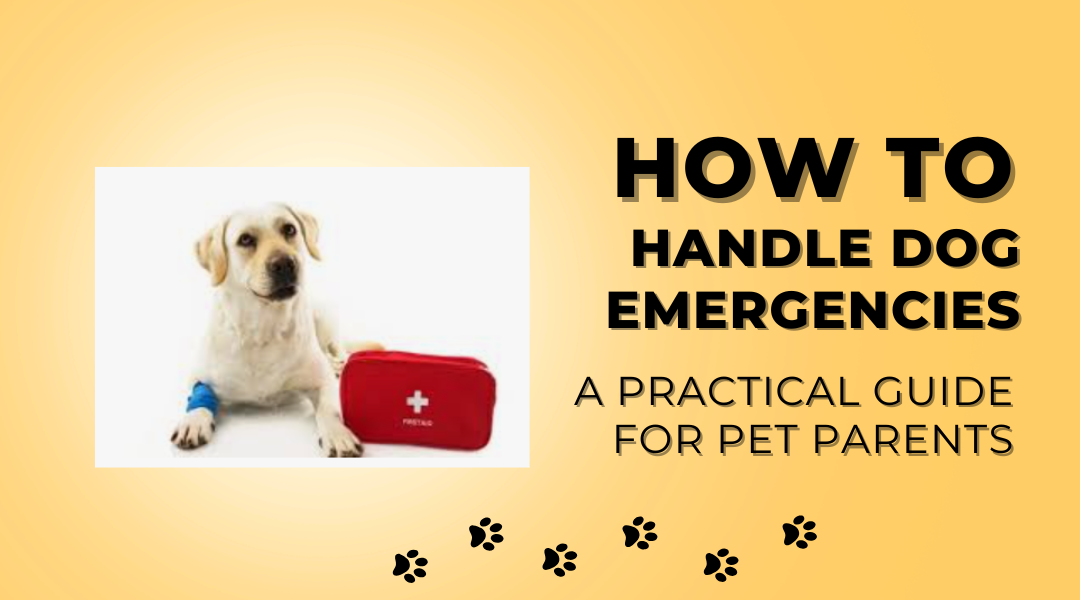When your dog gets hurt or sick, every second counts. Whether it’s a scraped paw from a backyard adventure or something more serious like poisoning, knowing what to do—and staying calm—can mean the difference between panic and a clear-headed response. Here’s how to tackle common emergencies and get your pup the help they need fast.
First Aid for Common Injuries
Dogs live life full-throttle, and sometimes that means bumps, cuts, or worse. Here’s how to handle the most frequent mishaps:
1. Cuts and Scrapes
A little blood can look scarier than it is. For minor wounds:
- Stop the bleeding: Press a clean cloth or gauze gently on the cut. Most small nicks clot within a few minutes.
- Clean it up: Rinse with lukewarm water and mild soap. Skip the hydrogen peroxide—it can slow healing.
- Keep it covered: A light bandage (changed daily) helps prevent licking. Watch for redness, swelling, or pus—those are vet-worthy signs.
2. Broken Bones
If your dog limps badly after a fall or accident, they might have a fracture.
- Don’t let them walk: Carry small dogs in a towel “sling.” For bigger dogs, slide a board or blanket under them to stabilize the limb.
- Skip DIY splints: You could make it worse. Just focus on getting to the vet ASAP.
3. Eye Trouble
Dogs get stuff in their eyes just like we do—dirt, scratches, or even a rogue twig.
- Flush it out: Use saline solution or clean water to rinse debris.
- Block the paw: If they’re rubbing, loosely cover the eye with gauze (don’t press!).
- See the vet fast: Squinting, cloudiness, or goopy discharge? That’s a red flag.
4. Burns and Hot Spots
Hot pavement, spilled coffee, or obsessive licking can leave painful marks.
- Cool burns fast: Run room-temperature water over the area for 5–10 minutes. No ice—it can damage tissue.
- Hot spots: Trim fur around the raw patch, dab with diluted betadine, and slap on a cone to stop the licking. Your vet might prescribe antibiotics.
Poisoning: What to Do When Your Dog Eats Something Toxic
Dogs have a knack for eating the worst things possible. Chocolate, rat poison, sugar-free gum—you name it.
Signs something’s wrong:
- Drooling like a faucet
- Stumbling like they’re drunk
- Vomiting or diarrhea (especially with blood)
- Seizures
Common culprits:
- Foods: Chocolate, grapes, xylitol (in gum and peanut butter)
- Household stuff: Antifreeze, ibuprofen, slug bait
- Plants: Sago palms, lilies, daffodils
Act fast:
- Stay calm. Freaking out wastes time.
- Grab evidence. Snag the wrapper or a piece of the plant if you can.
- Call for help: Ring your vet or the ASPCA Poison Control Hotline *(888-426-4435)*. Don’t make them vomit unless instructed—some toxins burn worse coming up.
Prevention tip: Dog-proof like you would for a toddler. Keep meds locked up, trash cans secured, and toxic plants out of reach.
Getting Your Dog to the Vet Safely
A panicked car ride can make injuries worse. Here’s how to transport them smoothly:
- Muzzle if needed: Even sweet dogs bite when in pain. A soft bandage or strip of fabric works in a pinch.
- Support their body: Use a blanket as a stretcher for big dogs. Small pups can ride in a carrier.
- Drive steady: No sharp turns. Lay down towels for bloody or sick dogs.
- Call ahead: Give the vet a heads-up so they’re ready when you arrive.
The Bottom Line
You don’t need to be a vet to save your dog’s life—just prepared. Keep a pet first-aid kit (gauze, saline, tweezers, vet wrap) and know the basics. Stay calm, act fast, and trust your gut. If something feels off, it’s better to hustle to the clinic than wait and wonder.
Pro tip: Save your vet’s number and the nearest emergency clinic in your phone now. When disaster strikes, you won’t waste time searching.
